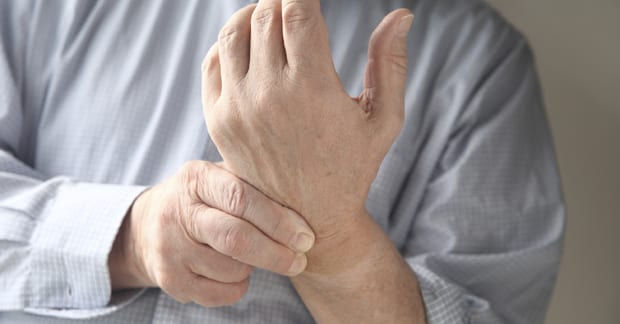Carpal Tunnel Syndrome (CTS) is a condition that results from pressure applied to the median nerve on the palm side of the wrist that causes numbness, tingling, weakness, and/or muscle damage affecting the thumb side of the hand and fingers, including the thumb, index, 3rd, and thumb side of the 4th finger. There is literally a tunnel through which 9 tendons and their sheaths, some blood vessels, and most importantly, the median nerve travel through to get to the thumb and fingers. As these tendons slide back and forth in their sheaths, friction can build up, leading to swelling when fast, repetitive finger-related work is performed, especially for prolonged time frames. The "syndrome" starts when the swelling occurs and the numbness/tingling/weakness complaints begin.
There are many causes of CTS. Most commonly, CTS occurs in people whom perform fast, repetitive motions including (but not limited to): typing on a computer keyboard, using a computer mouse, sewing, driving, assembly line work, painting, writing, use of hand tools, sports such as racquetball or handball, and playing musical instruments. Many of these tasks involve bending or twisting of the wrists (think of a violin or flute player and you get the picture). CTS most often occurs in people 30-60 years old, affects women more than men, and can either be caused or contributed to by other conditions such as fracture/trauma to the wrist or hand, arthritis of the wrist, diabetes, alcoholism, hypothyroid, kidney failure and dialysis, menopause, premenstrual syndrome (PMS), and pregnancy, infections, obesity, rheumatoid arthritis, SLE, and others.
Symptoms most commonly include numbness or tingling in the thumb-side palm, thumb, 2nd, 3rd, and thumb half of the 4th fingers. The symptoms can extend to the elbow or higher to the neck or shoulder, can affect both hands (but one is usually worse than the other), and can interfere with daily activities such as buttoning shirts, opening jars, holding onto the steering wheel, riding a bike, working with the hands, etc.
An examination by a doctor of chiropractic will often include checking your sensation with a sharp pointed object, percussing over the palm-side wrist, asking you to hold your hands back to back and palm to palm while counting the seconds to numbness, testing grip strength, and also checking the neck, shoulder and elbow as these areas can refer pain back and forth. Sometimes, he or she will order further testing to determine if nerve damage has occurred and if so, how much? Conservative chiropractic treatment is highly effective and DEFINITELY should be done FIRST, before injections, medications, or surgery!


